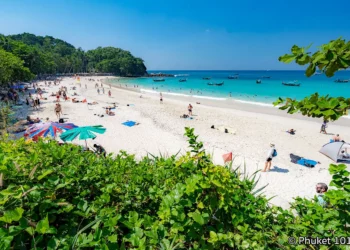India, often known as Deva Bhumi or the land of gods, has many old temples that show its deep connection to faith and history. The Jalpesh Temple, near Maynaguri in Jalpaiguri, West Bengal, is one such place, dedicated to Lord Shiva. Found in the green Dooars region, this temple, khown as Jalpesh Mandir, brings people who pray and those who want to learn and study about its rich past. This blog gives clear facts about the temple’s history, how it is built, why it matters for worship, and what you need to know to visit.
History of Jalpesh Temple
The Jalpesh Temple’s history began around 800 AD. It honors Lord Shiva, known here as Jalpeshwar, meaning “Lord of the Waters.” The temple’s name comes from Jalpesh, a descendant of King Bhagadatta, who ruled in the ancient Kamrup Kingdom. It has been an important place for worship in North Bengal for many years. Long ago, in the early 1200s, an Islamic invader named Muhammad bin Bakhtiyar Khalji damaged the temple. A Bhutanese king rebuilt it in the same century, but it later needed repairs. In 1524, Bishwa Singha, a leader from the Cooch Behar dynasty, started to build the temple we see today. It was later rebuilt in 1563 by Bishwa Singha and reconstruced in 1663 by Maharaja Pran Narayan. In 1621, Mahidev Raikut, from the Raikats of Baikunthapur, took over caring for the temple after breaking away from the Koch dynasty. In 1899, Rani Jagadeswari Devi, wife of King Jagendra Deva Raikut, repaired it after an earthquake.The temple is known for the Shravani Mela, a big festival in Shravan (July–August), when many people come to pray abd worship. Its ability to stay standing through wars and quakes shows its strong place in faith and culture.
Architecture of Jalpesh Temple
The Jalpesh Temple is made in a style from medieval Bengal, with some parts looking like Islamic designs, maybe due to Muslim influence. It is 126 feet tall and 120 feet wide, standing out in the area. The main room, called the garbha griha, is about 11 feet below the ground, like a basement. The Shiva Linga, named Anadi, is partly under water and touched during worship, which makes it special. In the entrance, there is a platform with a figure of Lord Shiva held by elephant trunks, a design that catches the eye. The inside has carvings, but the building is simpler than some other big Shiva temples. The temple area has a pond where people bathe for prayers and a big banyan tree for resting. The government has recently fixed up the area and added a lodge for visitors.The temple’s look shows the mark of the Cooch Behar dynasty and the mixed history of the region. Its underground room and special features make it interesting for people who pray and those who study old buildings.
Spiritual Significance
The Jalpesh Temple is a main place for Shiva worship in North Bengal, especially during the Shravani Mela in Shravan and Maha Shivaratri in February or March. As a Bhairava of the Bhramari Saktipitha, Jalpeshwar is a strong form of Lord Shiva, thought to help with health, wealth, and peace. In Shravan, many walk about 15 kilometers from the Teesta River with water to pour on the Shiva Linga, saying “Bol Bom” to show their faith.The Shravani Mela brings people from North Bengal, Assam, Bhutan, and Bangladesh, showing how the area’s cultures mix. Maha Shivaratri also has many visitors, with special prayers and events creating a holy atmosphere in the whole city. The temple’s long history of staying strong adds to its meaning as a place of faith.
Things to Do at Jalpesh Temple
People visiting the Jalpesh Temple can do things that mix faith, history, and learning about the area:
Take Part in Prayers: Join daily prayers or special ones in Shravan or Maha Shivaratri to see the temple’s ways.
Look at the Temple Area: Check out the underground room and the Shiva figure with elephant trunks at the entrance.
See Nearby Places: Visit the Teen Bigha Corridor, 35 kilometers away, or the Jarda River by the temple. Gorumara National Park and the Bhramari Devi Temple in Bodaganj are also near.
Be at the Shravani Mela: If there in Shravan, join the festival to see people’s faith and the area’s culture.
Buy and Eat Local: Go to Maynaguri’s markets for crafts or to try foods from North Bengal.
Visiting Information for Jalpesh Temple
How to Get There
The temple is 3 kilometers from Maynaguri and 23 kilometers from Jalpaiguri town, with many ways to travel.
By Plane: Bagdogra Airport, 75 kilometers away, has flights to Kolkata, Delhi, and other cities. Taxis and buses go from Bagdogra to Maynaguri.
By Train: Maynaguri Station, 6 kilometers away, is the nearest, and Jalpaiguri Railway Station is 23 kilometers from the temple. Taxis, auto-rickshaws, and van rickshaws are there to use.
By Road: From Maynaguri (6 kilometers) or Jalpaiguri (23 kilometers), take taxis, buses, or van rickshaws. National Highway 31D makes the roads good.
Temple Hours
The temple is open all day and night, so people can visit when they want. Big prayers, like pujas and Aarti, happen in the morning and evening. In Shravan and Maha Shivaratri, it gets busy, and there may be special plans. Ask temple workers for exact prayer times.
Best Time to Go
The best time is November to February, when it’s cool, from 10°C to 26°C. Shravan (July–August) is good for the Shravani Mela, but rain can make travel tough. Summers (April–June) are hot, up to 40°C, so go early in the morning.
Rules for Visitors
People must wear proper clothes: men need shirts, trousers, dhotis, or pajamas with a cloth over the shoulder while women need sarees, half-sarees, or churidar with a dupatta. Shorts, mini-skirts, sleeveless tops, and low-waist jeans are not allowed. Wash and wear clean clothes before going in. Chewing betel leaves, tobacco, or spitting is not okay, and taking pictures inside the temple is not allowed.
Final Words
The Jalpesh Temple in Jalpaiguri is an important place for faith and history in North Bengal. People come to pray to Lord Shiva, especially during the Shravani Mela, and its old design with an underground room draws those who like history. A visit to Jalpesh Mandir lets you feel Shiva’s presence and see the lively Dooars region. Plan a trip to this holy place to know its faith and past.











